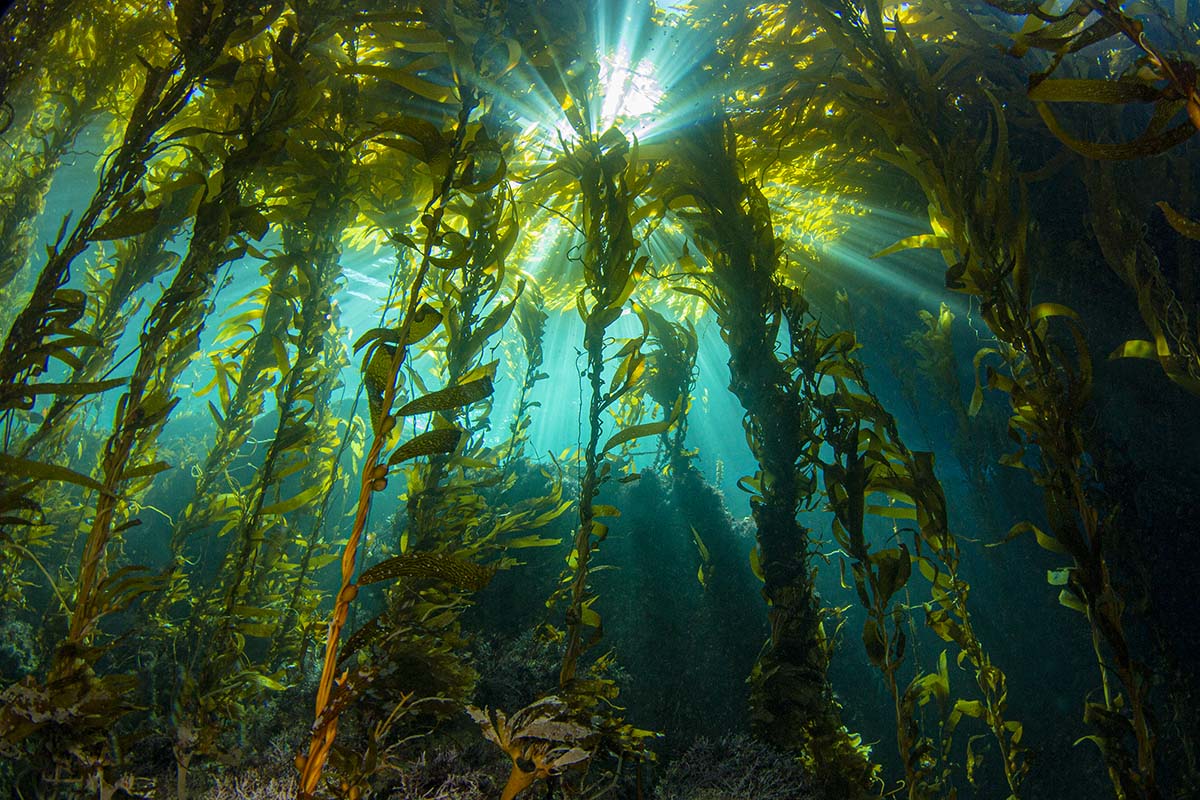Seagrass Restoration: A Bid To Renew Scotland's Coastal Ecosystems

Table of Contents
The Ecological Importance of Seagrass Meadows in Scotland
Seagrass meadows are often referred to as the "lungs of the sea," and for good reason. These underwater ecosystems are incredibly biodiverse, supporting a vast array of marine life and playing a crucial role in the health of Scotland's coastal waters. Their ecological importance is multifaceted, contributing significantly to overall marine biodiversity and the health of the wider ecosystem.
-
Significant nursery grounds for commercially important fish: Seagrass meadows provide vital nursery grounds for many commercially important fish species, including cod, plaice, and sea bass. The dense vegetation offers protection from predators and provides ample food sources for juvenile fish, ensuring healthy populations for future generations.
-
Habitat for a wide range of invertebrates: These meadows are teeming with invertebrate life, from tiny crustaceans to larger mollusks. These invertebrates form the base of the food web, providing sustenance for higher trophic levels, including the fish that rely on the seagrass for shelter.
-
Important refuge for numerous marine species: The complex structure of seagrass meadows offers refuge for many species, providing protection from predation and harsh environmental conditions. This makes them crucial habitats for a wide range of creatures, contributing to the overall biodiversity of the area.
-
Exceptional carbon sequestration capacity: Seagrasses are remarkably efficient at sequestering carbon dioxide from the atmosphere, acting as a significant carbon sink. This helps to mitigate climate change and improve water quality. They are estimated to sequester carbon at a rate comparable to, or even exceeding, that of tropical rainforests.
-
Coastal protection from erosion: Seagrass meadows act as natural buffers, reducing coastal erosion by dissipating wave energy. Their root systems stabilize sediments, preventing coastal degradation and protecting valuable coastal infrastructure. This natural coastal defense is crucial, particularly in light of rising sea levels and increasingly frequent storm events.
Threats to Scotland's Seagrass Meadows and the Urgent Need for Restoration
Despite their ecological significance, Scotland's seagrass meadows are facing numerous threats, leading to a significant decline in their extent and health. Human activities and the impacts of climate change are the primary drivers of this degradation.
-
Pollution from agricultural runoff and sewage: Excess nutrients from agricultural runoff and sewage pollution cause eutrophication, leading to algal blooms that smother seagrass beds and reduce water clarity, hindering photosynthesis.
-
Damage from boat anchors and propellers: Irresponsible boating practices, including anchoring in seagrass meadows and damage from propellers, can cause significant physical damage to these sensitive habitats. These physical disturbances can result in the uprooting of plants and the disruption of the delicate ecosystem.
-
Destructive fishing practices: Some fishing practices, such as bottom trawling, can directly damage seagrass meadows, leading to habitat loss and decreased biodiversity. These practices cause widespread destruction, affecting the long-term health of the ecosystem.
-
Impacts of climate change: Climate change is exacerbating existing threats, with rising sea temperatures and ocean acidification causing stress on seagrass meadows. These changes can impair their growth and resilience, making them more vulnerable to other stressors.
The decline of seagrass meadows has significant cascading effects on the wider ecosystem, impacting biodiversity, fish stocks, coastal protection, and carbon sequestration capacity. Urgent action is needed to reverse this trend and protect these vital habitats. Studies have shown that Scotland has lost significant acreage of seagrass over the past decades, highlighting the urgency of restoration efforts.
Current Seagrass Restoration Initiatives in Scotland
Recognizing the critical importance of seagrass meadows, several initiatives are underway across Scotland to restore these valuable habitats. These projects utilize various methods and emphasize community involvement and long-term monitoring.
-
Successful seagrass restoration projects: Several projects across various locations in Scotland have demonstrated the feasibility and success of seagrass restoration. These projects often involve transplanting seagrass shoots or employing innovative techniques such as seed collection and sowing.
-
Restoration techniques: A variety of restoration techniques are being employed, including transplanting healthy seagrass shoots from donor sites, collecting and sowing seeds, and utilizing innovative technologies such as drone-based monitoring and planting.
-
Community involvement and citizen science: Community involvement is key to the success of seagrass restoration. Citizen science initiatives engage volunteers in monitoring efforts, data collection, and even active planting activities. This participatory approach fosters a sense of ownership and stewardship.
-
Monitoring programs: Robust monitoring programs are crucial for evaluating the success of restoration efforts and for adapting strategies as needed. Regular monitoring allows scientists and stakeholders to assess the health and growth of restored seagrass meadows and make adjustments to restoration techniques.
Organizations like [insert relevant Scottish organizations working on seagrass restoration here] are leading the charge, spearheading research, implementing restoration projects, and raising awareness about the importance of seagrass conservation.
The Future of Seagrass Restoration in Scotland and its Wider Implications
The future of seagrass restoration in Scotland requires a multi-faceted approach, encompassing strengthened environmental regulations, continued research, and sustainable practices. The potential economic benefits associated with healthy seagrass meadows, such as enhanced fisheries and ecotourism, should also be leveraged to encourage investment and support.
-
Strengthened environmental regulations: Robust regulations are needed to protect existing seagrass meadows from further degradation. This includes managing pollution, regulating boating activities, and controlling destructive fishing practices.
-
Further research to optimize restoration techniques: Continued research is essential to develop more effective and cost-efficient seagrass restoration techniques. This includes exploring new technologies and improving our understanding of the factors that influence seagrass growth and resilience.
-
Potential for carbon credit schemes: Seagrass meadows offer significant carbon sequestration potential, creating opportunities for carbon credit schemes that incentivize restoration and conservation efforts. This can generate funding for future projects and promote sustainable development.
-
Green job creation: Investing in seagrass restoration creates green jobs in areas like ecological monitoring, restoration techniques, and related research, contributing to sustainable economic development.
By integrating seagrass restoration into wider coastal management strategies, Scotland can ensure the long-term health and resilience of its coastal ecosystems, protecting biodiversity, enhancing fisheries, mitigating climate change, and safeguarding the unique character of its coastline.
Conclusion
Seagrass restoration is not merely an environmental concern; it is crucial for the economic and social well-being of Scotland's coastal communities. These underwater meadows provide invaluable ecosystem services, contributing to biodiversity, fisheries, coastal protection, and climate change mitigation. While significant strides are being made, continued investment, sustainable practices, and widespread community engagement are crucial for the long-term success of seagrass restoration efforts. Learn more about seagrass restoration projects near you and how you can get involved in protecting these vital habitats. Support organizations dedicated to seagrass restoration and advocate for policies that prioritize the protection and enhancement of these underwater ecosystems. Let's work together to revitalize Scotland's seagrass meadows and secure their future for generations to come.

Featured Posts
-
 Final Destination 6 North American Box Office Projection Exceeds 30 Million
May 04, 2025
Final Destination 6 North American Box Office Projection Exceeds 30 Million
May 04, 2025 -
 Exploring The Life Of Nina Westbrook Wife Of Nba Star Russell Westbrook
May 04, 2025
Exploring The Life Of Nina Westbrook Wife Of Nba Star Russell Westbrook
May 04, 2025 -
 Canelo Alvarez Reveals His Frustrations With David Benavidez
May 04, 2025
Canelo Alvarez Reveals His Frustrations With David Benavidez
May 04, 2025 -
 Nhl Playoff Standings A Deep Dive Into The Western Wild Card Race
May 04, 2025
Nhl Playoff Standings A Deep Dive Into The Western Wild Card Race
May 04, 2025 -
 Formula 1 Star Max Verstappen Speaks On Fatherhood
May 04, 2025
Formula 1 Star Max Verstappen Speaks On Fatherhood
May 04, 2025
